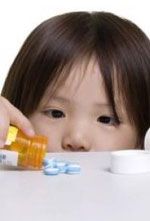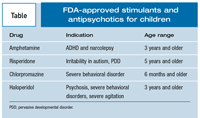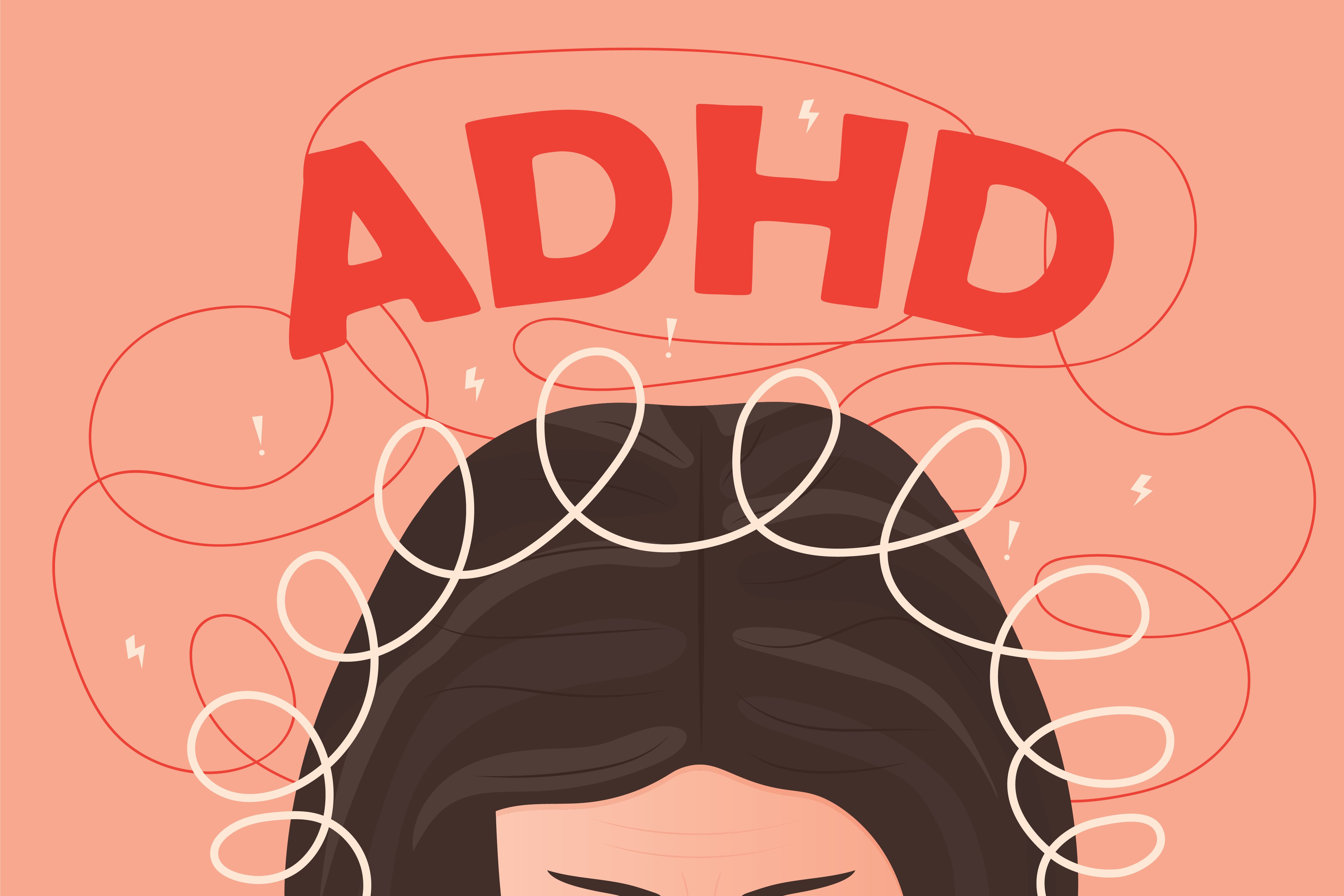Publication
Article
Psychiatric Times
A Delicate Brain: Ethical and Practical Considerations for the Use of Medications in Very Young Children
Effective, early intervention and appropriate support for and treatment of the caregivers of these vulnerable children will improve short-term outcomes and also may provide positive lifelong benefits.

The debate is growing. Amidst federal inquiries into financial ties to pharmaceutical companies by researchers, decreasing interface between academic institutions and pharmaceutical companies, and decreasing research funding available from the NIH, the use of psychotropic medications-particularly atypical antipsychotics and stimulants-remains mired in controversy.1
Absent significant changes to the current system of care and political climate and more research into the efficacy and long-term safety of psychotropic medications in children, this controversy will continue to grow.
Our youngest and most vulnerable children-those with significant mental health concerns for whom psychotropic medications are prescribed-are most affected by this controversy. The historical context for this controversy, the ethical implications of the current state of care for young children in the mental health care system, and the limited knowledge of the developmental neurobiological impact of these medications provide the background for a much-needed critical discussion.
Current prescribing practices compared with evidence-based treatments
Empirical research has shown that preschoolers can and do experience debilitating mental health problems that interfere with normal development and cause significant suffering for them and their families.2 The concurrent and predictive validity of ADHD, major depressive disorder, PTSD, and disruptive behavior disorders are well established in preschool children. Early childhood mental health problems stabilize over time; however, they are associated with substantial impairment in multiple developmental domains.
There is evidence that early psychological disorders increase the risk of mental health problems across the person’s life span. Although awareness of early childhood mental health problems has increased, this awareness has not translated into substantial empirical support for psychopharmacological interventions in this age-group or into increased access to nondrug interventions.
A substantial body of literature supports the efficacy of nonpharmacological treatments for young children. For example, there are more than 100 randomized controlled trials of parent-child interaction therapy-a training program that assists parents of children with disruptive behaviors. Parents are taught effective child management skills to improve both disruptive behaviors in their children and their relationship with their children. These trials show that effects are maintained up to 6 years after treatment has ended.3
Cognitive-behavioral therapy, with developmental modifications, has been found to be effective in decreasing anxiety symptoms in trauma-exposed preschoolers, with sustained results at 12-month follow-up.4 Child-parent psychotherapy-an attachment-based intervention-is effective in decreasing child and parent trauma-related symptoms following partner violence.5
Despite this significant evidence base for the effectiveness of psychotherapeutic interventions since the 1990s, studies have documented increasing rates of psychopharmacological prescriptions for children younger than 6 years, which has stirred impassioned responses in the lay press.6-8 Zito and colleagues reported a 3-fold increase in prescriptions for 2- to 4-year-old Medicaid-enrolled children between 1991 and 1995,6 followed by another doubling by 2001.9-12 By 2001, 2.3% of Medicaid-enrolled preschoolers received a prescription for a psychopharmacological agent.12 A more recent study demonstrated another doubling in rates of prescriptions for atypical antipsychotic agents for privately insured preschoolers from 2000 to 2007.13,14 Psychopharmacological agents are most commonly prescribed for children with ADHD and disruptive behavior disorders. In addition, however, medications, particularly antipsychotics, are often prescribed for children in this age range who have been given a diagnosis of bipolar disorder-a disorder whose validity in the preschool population has not been established.15
Importantly, factors beyond clinical symptoms appear to play a role in these prescriptions. Across studies, insurance status (public more than private insurance), sex (boys more than girls), race (whites more than blacks), and population concentration (rural more than urban areas) are related to children receiving prescriptions for psychopharmacological agents.12,13,16 Studies also highlight a relative lack of use of psy-chotherapeutic interventions, the first-line treatments for most mental health problems in preschoolers. Fewer than 40% of children who were given antipsychotic agents received psychotherapy either concurrently with or before initiation of drug therapy.14,17

Political environment and current FDA approvals
In 2002, Congress passed the Best Pharmaceuticals for Children Act, which provides extended patent exclusivity for medications tested for pediatric indications.18,19 Despite this incentive, there have been only 2 randomized controlled studies that have focused primarily on the preschool age–group, both of which examined treatment of ADHD (methylphenidate and atomoxetine). The literature suggests that psychopharmacological agents are less effective and are associated with higher rates of adverse effects in young children than in older children.20 The Tablelists the current FDA-approved indications and age ranges for stimulants and antipsychotics in children. Notably, 2 of the medications approved for preschoolers are typical antipsychotic agents. Methylphenidate, which has the most empirical support for safety and efficacy in the preschool age–group, has a specific warning against use in preschoolers.
Impact on the developing brain
The rapid advancement of neuroscience and the increasing interaction with psychiatry have raised new considerations about the use of atypical antipsychotics and stimulant medications in young children. The developing brain is exquisitely sensitive to neurotransmitter levels, and their expression gradients are critically important for normal development and plasticity of the CNS. Alterations in the levels of monoamines and other neurotransmitters, as a result of environmental exposures or medications, are expected to influence the development and maturation of the underlying neural circuits, particularly during periods of rapid neurodevelopment, such as the first years of life.
There is a paucity of research on the long-term consequences on brain development and function following exposure to atypical antipsychotics and stimulant medications. The information to date has been extrapolated from preclinical animal research and from studies of children exposed prenatally to psychopharmacological agents. Animal studies have examined the cognitive impact of early exposure to both atypical antipsychotics and SSRIs and have shown associations between early exposure to these medications and deficits in cognitive function, spatial memory, and alterations in neurotransmitter receptor distribution.21
Administration of methylphenidate to young rodents resulted in alterations in neurotransmitter receptor densities, particularly dopamine.22,23 Behavioral studies have demonstrated alterations in motivation, reward pathways, and spatial memory in juvenile normal rodents following early exposure.24 However, caution is warranted when extrapolating these data to children with psychiatric diagnoses such as ADHD. In these children, there is increasing evidence of neurodevelopmental differences independently associated with psychiatric diagnoses. When 2 medications are combined, the risks to the developing brain likely increase exponentially, with unknown impacts on neurodevelopment. Thus, extreme caution is warranted with the use of multiple psychotropic medications because of the limited evidence base for efficacy of single medications in young children and the complete lack of efficacy for multiple medications in young children.25, 26
Ethical implications: a call for change
The ethical implications of the current state of use of psychotropic medications in young children are many and represent a call to arms. The key ethical principles of nonmaleficence, justice, and beneficence are all relevant to this discussion.27 As physicians, we began our service to patients with the Hippocratic Oath primum non nocere (at first do no harm). Given the lack of efficacy data for the use of psychotropic medications in children and the significant known adverse effects, the principle of nonmaleficence is applicable.
However, the disconnect between the implementation of evidence-based interventions and the elevated use of psychotropic agents high-lights the principles of beneficence and justice. Justice requires that all young children be able to access effective and appropriate clinical care. Currently, inadequate insurance reimbursement for developmentally appropriate assessment of and psychotherapy for young children,17 the critical shortage of mental health providers trained in the care of young children, the absence of federal support for the needed intervention research, and the lack of funding to implement the existing evidence-based treatments all conspire against justice in the mental health treatment of very young children. Specifically, clinicians who serve young children do so with substantially less information, fewer proven treatment options, and more limited access to psychotherapeutic first-line treatments than those who serve older children and adults. The increasing evidence that the use of atypical antipsychotics and other psychotropic medications is occurring at higher rates in certain ethnic populations and in children in the child welfare system highlights a failure to apply the principle of justice that demands that all groups be equally treated.14,28
Consideration of beneficence in mental health treatment of young children is critical. Families that have children with significant mental health issues are in crisis. Often they have struggled for years before seeking assistance. Withholding all medications in young children is in direct opposition to the principle of beneficence. Beneficence requires that clinicians use their best clinical judgment, incorporating parents’ goals and values and the current evidence, to alleviate suffering, enhance safety, and balance the potential benefits with the risks of untreated or undertreated psychopathology. Until we have sufficient evidence, these decisions will continue to be fraught with uncertainty. The issue is controversial: some suggest that psychopharmacological agents may be neuroprotective in children with mental illness, while others view the use of medications in preschoolers as universally unacceptable. To date, we do not have the data to resolve this controversy.
To move forward will require a concerted effort across multiple systems. We must address the critical shortage of child mental health providers at all levels. Federal efforts to address this shortage, such as the currently approved but as yet unfunded Child Health Care Crisis Relief Act (H.R. 1932/S. 999), would provide student loan repayment for child health care providers and training stipends directly to institutions to support the training of child psychiatrists, psychologists, and social workers. Efforts to get this program funded are needed. Mental health care policies must be reformed to provide adequate reimbursement for the comprehensive assessments recommended by clinical guidelines as well as to provide for the implementation of psychotherapeutic evidence-based modalities in young children.
Treatment of parental mental health problems, a well-established approach to reducing child mental health symptoms, is promised through the Affordable Health Care Act and must be linked to child mental health care services. Existing guidelines for the use of psychotropic medications in young children should be implemented. The Best Pharmaceuticals for Children Act has called for more research on both the developmental neurobiological impact of stimulants and antipsychotics and the long-term efficacy and safety of these medications. Implementation of these recommendations would make substantial progress toward ending both the historically disproportionate lack of information on treating young children with these medications and the inadequate approach toward young children’s psychopathology. Effective, early intervention and appropriate support for and treatment of the caregivers of these vulnerable children will improve short-term outcomes and also may provide positive lifelong benefits.
References:
References
1.
Steinberg-Epstein R, Book T, Wigal SB. Controversies surrounding pediatric psychopharmacology.
Adv Pediatr.
2011;58:153-179.
2.
Egger HL, Angold A. Common emotional and behavioral disorders in preschool children: presentation, nosology, and epidemiology.
J Child Psychol Psychiatry.
2006;47:313-337.
3.
Hood KK, Eyberg SM. Outcomes of parent-child interaction therapy: mothers’ reports of maintenance three to six years after treatment.
J Clin Child Adolesc Psychol
. 2003;32:419-429.
4.
Cohen JA, Mannarino AP. A treatment outcome study for sexually abused preschool children: initial findings [published correction appears in
J Am Acad Child Adolesc Psychiatry.
1996;35:835].
J Am Acad Child Adolesc Psychiatry.
1996;35:42-50.
5.
Lieberman AF, Ghosh Ippen C, Van Horn P. Child-parent psychotherapy: 6-month follow-up of a randomized controlled trial.
J Am Acad Child Adolesc Psychiatry.
2006;45:913-918.
6.
Zito JM, Safer DJ, dosReis S, et al. Trends in the prescribing of psychotropic medications to preschoolers.
JAMA.
2000;283:1025-1030.
7.
Pear R. White House seeks to curb pills used to calm the young.
New York Times.
March 20, 2000.
8.
Shute N, Locy T, Pasternak D, et al. The perils of pills. The psychiatric medication of children is dangerously haphazard.
US News World Rep
. 2000;128:44-50.
9.
Patel NC, Crismon ML, Hoagwood K, et al. Trends in the use of typical and atypical antipsychotics in children and adolescents.
J Am Acad Child Adolesc Psychiatry.
2005;44:548-556.
10.
Cooper WO, Hickson GB, Fuchs C, et al. New users of antipsychotic medications among children enrolled in TennCare.
Arch Pediatr Adolesc Med.
2004;158:753-759.
11.
Zuvekas SH, Vitiello B, Norquist GS. Recent trends in stimulant medication use among U.S. children [published correction appears in
Am J PsychiÂatry.
2006;163:942].
Am J Psychiatry.
2006;163:579-585.
12.
Zito JM, Safer DJ, Valluri S, et al. Psychotherapeutic medication prevalence in Medicaid-insured preschoolers.
J Child Adolesc Psychopharmacol.
2007;17:195-203.
13.
Constantine RJ, Tandon R, McPherson M, Andel R. Early diagnoses and psychotherapeutic medication treatment experiences of a cohort of children under 6 years old who received antipsychotic treatment in Florida’s Medicaid program.
J Child Adolesc Psychopharmacol.
2011;21:79-84.
14.
Olfson M, Crystal S, Huang C, Gerhard T. Trends in antipsychotic drug use by very young, privately insured children.
J Am Acad Child Adolesc Psychiatry.
2010;49:13-23.
15.
McClellan J, Kowatch R, Findling RL; Work Group on Quality Issues. Practice parameter for the assessment and treatment of children and adolescents with bipolar disorder [published correction appears in
J Am Acad Child Adolesc Psychiatry.
2007;46:786].
J Am Acad Child Adolesc Psychiatry.
2007;46:107-125.
16.
Ellis AR. The administration of psychotropic medication to children ages 0-4 in North Carolina: an exploratory analysis.
N C Med J.
2010;71:9-14.
17.
Gleason MM, Egger HL, Emslie GJ, et al. Psychopharmacological treatment for very young children: contexts and guidelines.
J Am Acad Child Adolesc Psychiatry.
2007;46:1532-1572.
18.
Food and Drug Administration. Best Pharmaceuticals for Children Act of 2002. January 2002. http://www.fda.gov/Drugs/DevelopmentApprovalProcess/DevelopmentResources/ucm049876.htm. Accessed February 14, 2012.
19.
Laughren TP. Regulatory issues in pediatric psychopharmacology.
J Am Acad Child Adolesc Psychiatry.
1996;35:1276-1282.
20.
Greenhill L, Kollins S, Abikoff H, et al. Efficacy and safety of immediate-release methylphenidate treatment for preschoolers with ADHD [published correction appears in
J Am Acad Child Adolesc Psychiatry.
2007;46:141].
J Am Acad Child Adolesc Psychiatry.
2006;45:1284-1293.
21.
Llorente-Berzal A, Mela V, Borcel E, et al. Neurobehavioral and metabolic long-term consequences of neonatal maternal deprivation stress and adolescent olanzapine treatment in male and female rats.
Neuropharmacology
. 2011 Jul 28; [Epub ahead of print].
22.
Moll GH, Hause S, Rüther E, et al. Early methylphenidate administration to young rats causes a persistent reduction in the density of striatal dopamine transporters.
J Child Adolesc Psychopharmacol.
2001;11:15-24.
23.
Penner MR, McFadyen MP, Pinaud R, et al. Age-related distribution of c-fos expression in the striatum of CD-1 mice after acute methylphenidate administration.
Brain Res Dev Brain Res.
2002;135:71-77.
24.
Gray JD, Punsoni M, Tabori N, et al. Methylphenidate administration to juvenile rats alters brain areas involved in cognition, motivated behaviors, appetite, and stress.
J Neurosci.
2007;27:7196-7207.
25.
Findling R, Drury S, Jensen P, Rapoport J; AACAP Committee on Quality Issues. Practice parameter for the use of atypical antipsychotic medications in children and adolescents.
J Am Acad Child Adolesc Psychiatry.
In press.
26.
American Academy of Child and Adolescent Psychiatry. Practice parameter on the use of psychotropic medication in children and adolescents.
J Am Acad Child Adolesc Psychiatry.
2009;48:961-973.
27.
Spetie L, Arnold LE. Ethical issues in child psychopharmacology research and practice: emphasis on preschoolers.
Psychopharmacology (Berl).
2007;191:15-26.
28.
Leslie LK, Raghavan R, Zhang J, Aarons GA. Rates of psychotropic medication use over time among youth in child welfare/child protective services.
J Child Adolesc Psychopharmacol.
2010;20:135-143.






